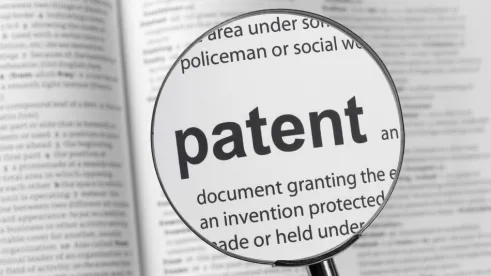After an inter partes review (“IPR”) is instituted, a patent owner has an opportunity to file a motion to amend the claims and thereby propose a reasonable number of substitute claims. See 35 U.S.C. § 316(d)(1). Unlike the challenged claims at issue in an IPR, all of the substitute amended claims are subject to PTAB review for compliance with all of the statutory requirements for patentability, and not just for patentability in view of the prior art. See Uniloc 2017 LLC v. Hulu, LLC, No. 2019-1686, 202 WL 4197750 (Fed. Cir. July 22, 2020) (claim amendments proposed by a patent owner in an IPR are not just limited to challenges under anticipation and obviousness and, instead, may also be challenged as invalid under other theories, including unpatentable subject matter). As a result, amended claims are subject to greater scrutiny by the Board before they can be declared valid. Nevertheless, amended claims can carry the day in an IPR by surviving where the original claims could not. Here we provide some instances where a motion to amend may be a favorable option for a patent owner to consider.
No significant past damages
If no significant past damages could be recovered with the issued patent claims, amending the claims during an IPR may be a good option for a patent owner. See Aqua Prod., Inc. v. Matal, 872 F.3d 1290, 1315 (Fed. Cir. 2017) (issued amended claims are subject to the intervening rights of anyone already practicing them and limit the scope of the patent owner's damages). This can often be the case where the asserted patent was recently issued and has ample patent life ahead. With no significant past damages available to the patent owner, the risk of losing out on past damages via intervening rights would not outweigh the benefit of valid amended claims surviving an IPR proceeding.
Stop a competitor
If a patent owner is asserting its patent against a direct competitor in order to obtain an injunction and prevent further distribution of an infringing product, amending claims may make sense where the infringement read is not disrupted. This is again true in situations where there are several years of life left on the patent, and the patent owner will clearly benefit from the surviving amended claims.
Fix an adverse claim construction
A third situation when a patent owner may want to amend the claims is where the patented claims have been construed too broadly, either by the PTAB or a district court, especially where a narrower claim would still adequately protect the patent owner’s rights. For example, a patent owner may believe and have contended that a claim’s preamble is limiting. However, after a Markman hearing or Institution Decision where a court or the Board disagreed, the patent owner is faced with a broader than anticipated claim scope and more vulnerability to seeing those claims invalidated in light of prior art. In such a situation, the patent owner can amend the claims to move the preamble language into the body of the claim, so long as the amended claims can overcome the prior art and still read on the accused product or process.
In sum, despite the added scrutiny of amended claims by the PTAB, if the validity or value of the patented claims are at substantial risk during an IPR proceeding and the circumstances allow for it, the patent owner should consider amending the claims.





 />i
/>i

